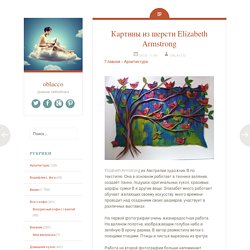English in early childhood
> Kseniakuperman
6 youtube каналов английского для детей
Pat Pat family look. EnglishClub : English language. Small Talk: Conversation Starters. Pre-birth to Three: Observation, Assessment and Planning. LearnEnglish Kids - British Council. Practical tips. By Opal Dunn, educational consultant and author Introduction Young children learn English differently from most adults.

Most have an innate ability to pick up English while taking part in activities, by making sense of what they are doing and picking up the adult’s language that accompanies the activity. You can find out more in the British Council booklet ‘How young children learn English as another language’, also available on the parents pages of the LearnEnglish Kids website. Planned English sessions. Key Person & Attachment - Early Years Matters. The Key Person Children thrive from a base of loving and secure relationships. This is normally provided by a child’s parents but it can also be provided by a key person.
A key person is a named member of staff with responsibilities for a small group of children who helps those children in the group feel safe and cared for. The role is an important one and an approach set out in the EYFS which is working successfully in settings and in Reception classes. It involves the key person in responding sensitively to children’s feelings and behaviours and meeting emotional needs by giving reassurance, such as when they are new to a setting or class, and supporting the child’s well-being.
How Are Happiness and Learning Connected?
As teachers, we also know that when students' affective filters or defenses are sky high, fight or flight responses will be modus operandi. A room full of defensive behaviors (withdrawn, angry) is a sad, unproductive place to teach and learn. Now let's flip it and take a look at how much more we are able to learn when we are in harmony with the people and things in any given educational environment. Being in harmony means feeling safe, feeling valued and a necessary part a group, and in this case, a learning community.
Takaharu Tezuka: The best kindergarten you’ve ever seen. Learning Time with Timmy apps. Practical tips. Картины из шерсти Elizabeth Armstrong. Elizabeth Armstrong из Австралии художник В по текстилю.

Она в основном работает в технике валяние, создаёт панно, подушки, оригинальных кукол, красивые шарфы, сумки В и другие вещи. Элизабет много работает: обучает желающих своему искусству, много времени проводит над созданием своих шедевров, участвует в различных выставках. На первой фотографии очень жизнерадостная работа. На валяном полотне, изображающем голубое небо и зелёную В крону дерева, В автор разместила ветки с поющими птицами.
Птицы и листья вырезаны из фетра. Работа на второй фотографии больше напоминает аппликацию. На валяное полотно с красивыми переходами цвета и цветными прожилками беспорядочно пришиты вручную квадраты и круги. В этой работе объединены ручная роспись, войлок, хлопок, шелк, шелковая бумага, раскрашенная акварельными карандашами, марля, ручная и машинная вышивка.
Page from English in Early Childhood - British Council. Carol Dweck: The power of believing that you can improve. How can parents and teachers best educate young children?
What principles can both teachers and parents bring to the education of very young children? Gillian Craig, who was part of the Learning Time with Shaun and Timmy writing team, explains.
As teachers and parents, we follow certain principles in our roles. Often though, these principles overlap and all we need to do is recognise and reinforce these areas. Ask (the right) questions When my daughter came out of her class one day shortly after her course started, I asked her, 'What did you do in class today?
'. Although my daughter is only two years old, (and more experienced parents than me would not have asked such a broad question to start with), questioning our children at any age about what they have done in class is a natural thing to do.
Similarly, a child’s artwork can provide a prompt for asking questions: 'What (or who) is it?
' Teachers also want their students to reflect on their lessons, but with young children especially, this is a learned skill. Reinforce desirable behaviour. Page from English in Early Childhood - British Council. Page from English in Early Childhood - British Council. Password protected padlet. Importance of play for babies & children. Play is more than just fun for babies and children.

It’s how they learn best, and how they work out who they are, how the world works and where they fit into it. You can read this article in a selection of languages other than English. The importance of play Playing is one of the most important things you can do with your child, because play is essential for your child’s brain development. The time you spend playing together gives your child lots of different ways and times to learn. Play also helps your child: build confidence feel loved, happy and safe develop social skills, language and communication learn about caring for others and the environment develop physical skills. Your child will love playing with you, but sometimes she might prefer to play by herself and won’t need so much hands-on play from you. Different types of play Unstructured, free play is the best type of play for young children.
This is play that just happens, depending on what takes your child’s interest at the time.
ZERO TO THREE.
Спорт
Apps. LearnEnglish Kids - British Council. Page from English in Early Childhood - British Council.



